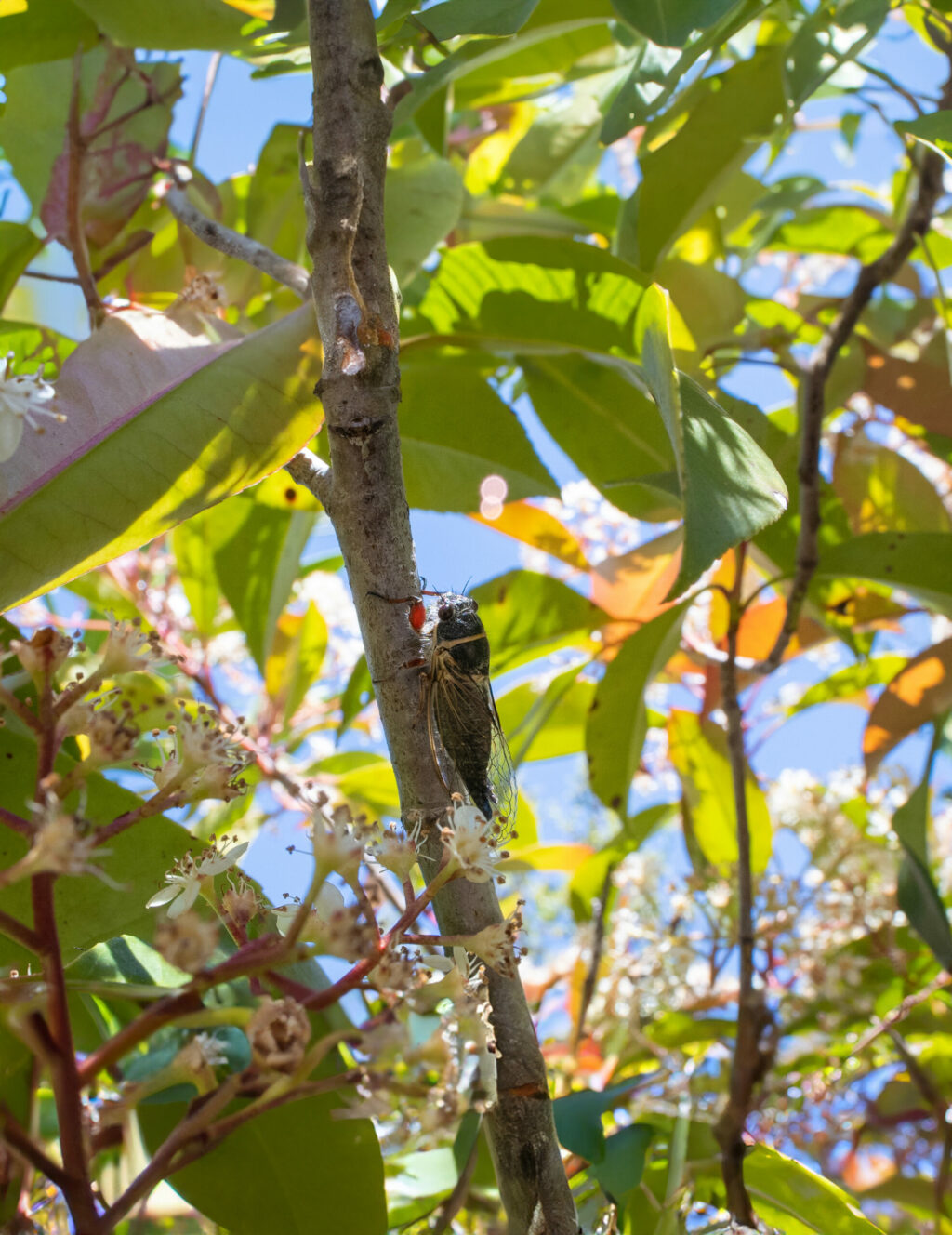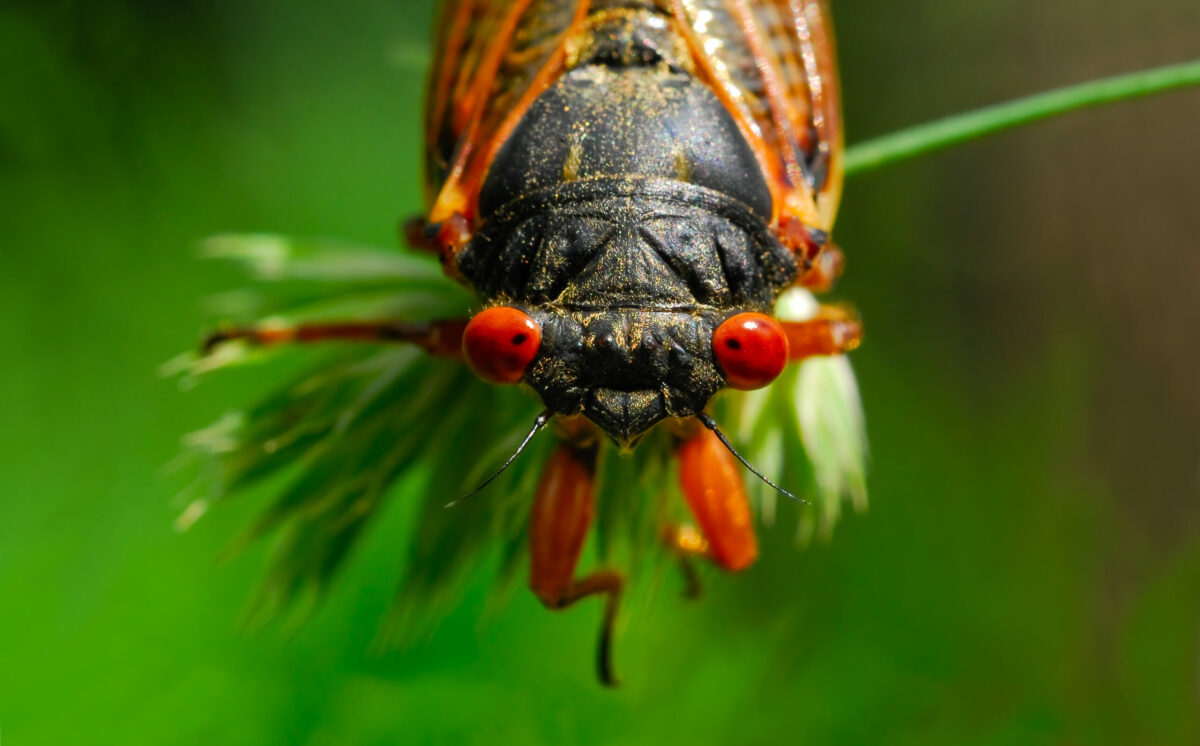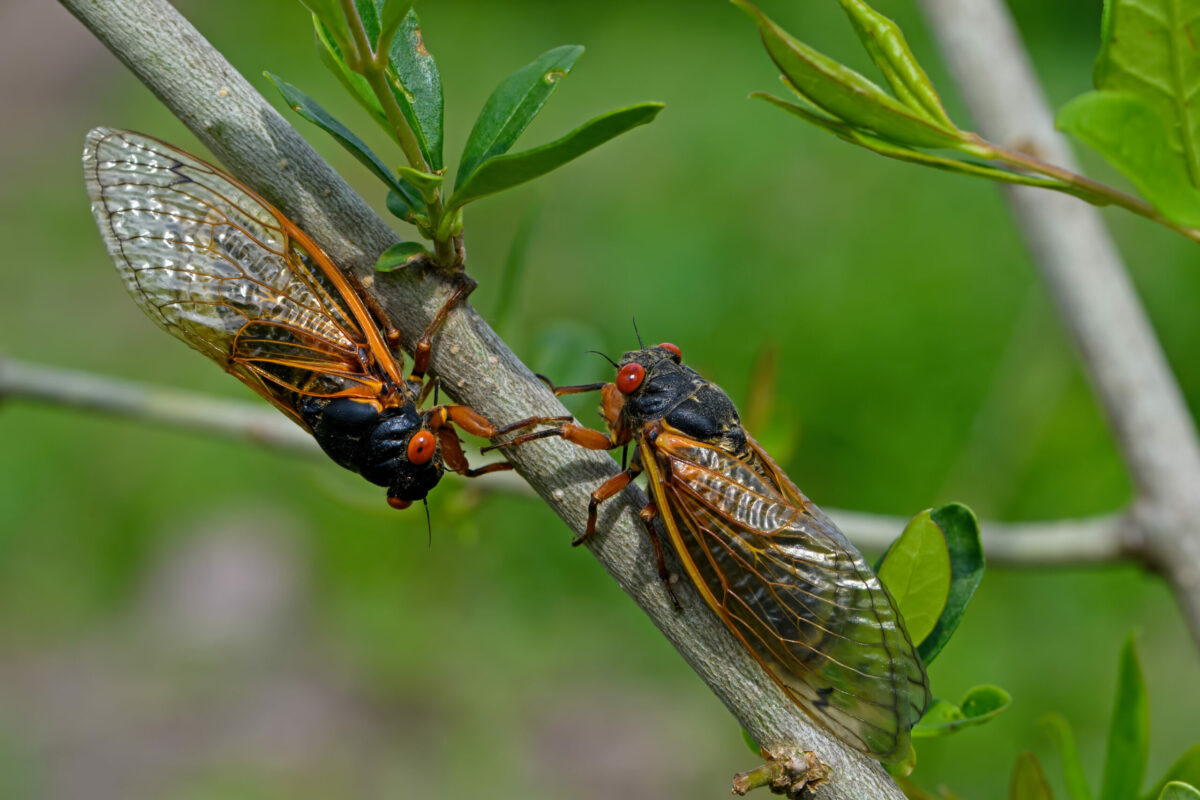This summer in the Midwestern and Eastern U.S., two broods of periodic cicadas—one that emerges every 13 years, the other every 17–will overlap for the first time in 221 years. It should be quite a raucous scene (trillions of cicadas are expected to emerge), and Sonoma State University entomologist Elliott Smeds will be there.
But Smeds spends most of his time studying the periodic cicadas’ lesser-known counterparts closer to home. Sonoma County has at least a dozen native species of cicadas, from the coast to the interior mountains: smaller, quieter and less numerous than their cousins, they emerge every year to herald the arrival of summer with their evocative calls.
Local cicadas are classified into two groups: “wing-tapping cicadas,” which strike their wings against tree branches to produce sound, and “whip cicadas,” which produce a high-pitched whine using a pair of organs on their abdomen called tymbals.

“The tymbals flex inward and outward via muscle contraction, producing a click in much the same way as those clickers you can use for training dogs—except that the tymbals click dozens or even hundreds of times a second,” Smed says.
Cicadas don’t do this simply to serenade the rest of us on sunny days. Rather, what we hear—predictably enough, for anyone who likes to watch nature documentaries—is the sound of males calling for a mate.
Cicadas can be heard as early as March and as late as August, but tend to peak around early June. Rising summer temperatures not only spur cicadas from the soil, where they spend most of their lives as nymphs feeding on plant roots, but also support their noisemaking.
“The act of singing requires a fair amount of metabolic energy,” Smeds says. “They’re using warm temperatures to heat themselves up so that their muscles can move fast enough to generate the sound.”
After mating, males will try again, while females will lay eggs in trees or shrubs. Then both will die. The babies will hatch, crawl back underground, and start the cycle over.
Sonoma’s cicadas occupy a range of habitats, says Smeds. He’s found them at Fort Ross in view of the ocean and in the chaparral at the top of the Mayacamas. Quiet, less disturbed parks, including Trione-Annadel State Park and Hood Mountain Regional Park, are ideal for hearing their song.












